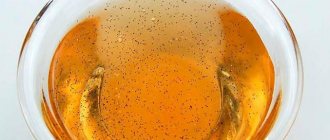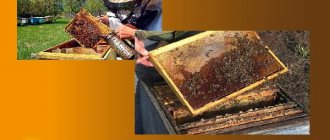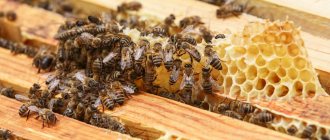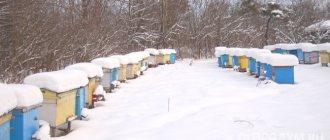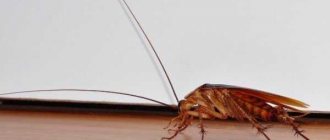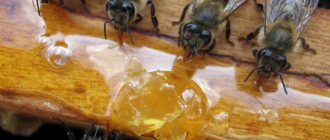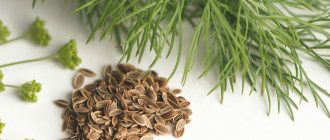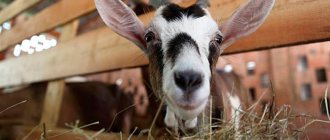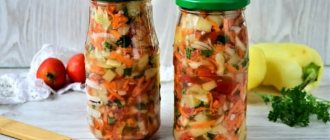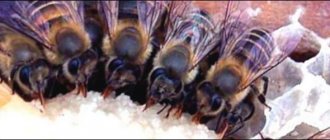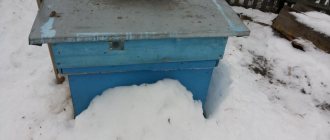It’s good if there was a lot of honey in the summer, and you took some for yourself, and left some for the bees (at least 18 kg per bee colony); if in your region there is a good late (end of August - beginning of September) bribes.
Then, most likely, autumn feeding will not be needed. This is when supporters of the opinion that feeding bees in the fall is not necessary in any case rejoice - yes, this topic is still being discussed.
If the above two situations do not apply to you, or you do not have the opportunity to take the hives out into the wild, then you cannot do without feeding. It is important to keep the following points in mind here:
Rules for feeding bees
The beekeeper faces two main tasks:
- To provide bee colonies with conditions for normal life and to prevent pathology in the development of bees.
- Obtain a high yield of beekeeping products. This can only be achieved if the basic condition is met: insects must receive nutrients in the required quantities.
To do this, bee colonies need to provide three conditions:
1. Spring bribe should help the development of viable and strong bees.
2. The main bribe must be long-term and significant in volume so that the bees can effectively use it to obtain beekeeping products.
3. The autumn bribe should be aimed at strengthening and developing the strength of the bee colony.
Features of autumn-winter feeding
If there is not enough natural honey to feed bee colonies, then the bees should be fed with sugar syrup for the winter. The rules for its implementation regulate certain time frames:
1. In August, you should start feeding bees with sugar syrup for the winter. Proportions in sugar syrup: per 1 kilogram of sugar - 1.5 liters of water. Portion for daily use – up to 300 grams per hive. This syrup is intended for old bees, which, having processed it, will die over the winter.
2. Nests for wintering should be ready by September. If bee colonies by this time still need food, then the concentration of syrup should be increased. In such cases, the bees are fed with sugar syrup for the winter as follows: 3 to 2 – the ratio of sugar and water. The amount of feed also increases: the daily dose is up to three liters. This is necessary to quickly fill the cells.
3. Winter nutrition consists of regular feeding with honey or sugar syrup in a very small concentration. Daily dose – 15-30 grams.
4. When wintering comes to an end, warm syrup is poured into the honeycombs of one frame and the frame is placed in the hive, from where the empty honeycombs are first removed. Then you need to re-insulate the hive.
What is it for?
Autumn feeding of colonies is necessary to ensure sufficient nutrition for the subsequent wintering of the swarm. Honey is considered a suitable option. The use of sugar syrup allows you to preserve the beekeeping product. This makes maintaining an apiary more profitable from a commercial point of view.
At the same time, autumn feeding is usually needed in the following cases:
- Placing the apiary away from honey plants. At the same time, insects can stock up on honeydew honey, which is a toxic product for them. It must be completely removed from the hives and replaced with a sugar solution. When nectar crystallizes, bees do not seal it. In this case, the mass is also removed.
- Large amounts of precipitation in summer. Constant rain prevents insects from flying out. Therefore, they cannot collect the required amount of nectar to make honey.
- Replacement measure after pumping.
- Not very good flowering of honey plants.
- The need to treat the swarm. In this case, a drug is added to the sugar syrup.
If honey collection is unsatisfactory in the central regions, incentive feeding is used in the fall. It activates the instincts of the bee colony. This measure is necessary if the queen has stopped laying prematurely. Sugar nutrition must be given in small portions. At the same time, the receptionists consider it a bribe. This stimulates increased feeding of the uterus. Due to this, the resumption of masonry is activated.
Feeding bees in autumn
Autumn. Bee houses heading for the winter require replenishment of food supplies, because ahead is a low-active and very difficult period for bee colonies - winter, with all its treachery and mercilessness. In order for the bees to successfully survive it, to be ready to produce viable offspring in the spring and to produce beekeeping products, they must be carefully and timely prepared for the winter period.
Feeding bees with sugar syrup for the winter helps solve several problems:
- prepare the necessary food supplies if the bee colonies are unable to cope with this task themselves;
- reimburse honey that was withdrawn at the end of the main honey harvest;
- replace honey with rapid crystallization and honeydew honey with high-quality syrup;
- feed the bees with therapeutic and prophylactic agents, if necessary.
For effective wintering, the best food is natural honey, preferably flower honey. But it’s not always possible to leave it for the bees. In this case, you have to decide how to feed the bees with sugar syrup.
Why feed bees in the fall?
Autumn feeding of bees is part of the preparatory work for the upcoming winter. There are several reasons for this stage of preparation:
- Provide a supply of food for the winter if it is completely absent. This often happens because the beekeeper took too much honey.
- Replenish food supplies if there is no autumn harvest. In this case, the bees eat up the reserves before wintering.
- Replace low-quality food. This applies to rapidly crystallizing or honeydew honey. In the first case, the bees may starve because they cannot take the crystallized product. In the second case, there is a risk of poisoning.
- Stimulate autumn egg laying. This allows you to strengthen the hive for the winter with strong young animals, which is the key to a successful wintering.
- Carry out treatment and prevention of diseases. It is in the fall that bees are most susceptible to them.
How to make syrup?
It is very important in the autumn to prevent severe wear and tear on the bees; it is important to preserve the energy with which insects break down polysaccharides and seal the honeycombs. They must complete the necessary work as quickly as possible. In this process, they need the help of a beekeeper - they need to ensure that the bees are fed with sugar syrup for the winter; it is advisable to use the following proportions: sugar 3 kg, water 2 liters. This will give a solution that is most convenient for processing by bee colonies - 64%.
One of the options for making syrup:
- You need to take sugar, definitely light sugar.
- Pour water into a clean container and bring to a boil.
- Pour sugar into boiling water and, stirring, dissolve it.
- You can (but do not have to) bring the syrup to a boil and immediately remove from heat. It is contraindicated to boil the syrup, because if the sugar burns, it will become unsuitable for bees.
- Cool the syrup to 30 degrees and distribute to the bees. Bee colonies will be reluctant to take cold syrup.
There are important points in the syrup preparation process that you need to pay attention to:
- It is recommended to use soft water. The fact is that in hard water the rate of syrup crystallization increases. If hard water is used as a basis, then first it must be settled and only after that the process of preparing the syrup begins.
- In order to bring the sugar syrup closer to the acidic reaction characteristic of flower honey, it is necessary to pour acetic acid (70%) into the syrup in the proportion of 0.3 grams per kilogram of sugar. This proportion will bring additional benefit - it will provide a preventive effect against nosematosis.
Proportions
In order for feeding bees to be successful, it is important to adhere to the ratio of components when making syrup. It is also worth considering the following:
- Use only white sugar. Cane product is not recommended for use.
- Pour water into a container and bring it to a boil.
- Add sugar in small portions. At the same time, it should be constantly stirred.
- Keep the mixture on the stove until the crystals are completely dissolved.
- Do not boil the liquid so that the mixture does not burn.
Expert opinion
Zarechny Maxim Valerievich
Agronomist with 12 years of experience. Our best country expert.
Ask a Question
Then the composition must be cooled to +35 degrees and used to feed bee colonies. In this case, it is worth using soft water. Hard liquid accelerates crystallization. Therefore, it first needs to be defended for 24 hours.
To properly prepare sugar syrup, you can use the following table:
| Concentration | Amount of finished product, liters | Water, liters | Sugar, kilograms |
| 70 % | 3 | 1,4 | 2,8 |
| 60 % | 3 | 1,6 | 2,4 |
| 50 % | 3 | 1,9 | 1,9 |
The amount of feed is the key to successful wintering
The bee colony must be provided with food in such quantities that will enable each bee to successfully overwinter. But it is not always possible to correctly calculate the amount of feed required for this. In such a situation, a convenient way out is to provide food in large quantities. If the food is not used in full, it can be used for the spring development of the bee colony.
It should be noted that when feeding bees with sugar syrup for the winter, it is necessary to calculate the proportions of food for a specific bee colony, taking into account certain factors:
- in which region is the apiary located: in the south there is a shorter winter, therefore, in such regions in the south, less food reserves are needed;
- whether wintering takes place on the street or in a winter hut: if bees winter on the street, then they need more food than during wintering in an omshanik;
- family strength: a family that winters, for example, on eight frames, needs much more carbohydrate reserves than a family that spends the winter on five frames.
The frames that are installed in the nest for wintering must contain food in an amount of over two kilograms with a total amount of food product of 9-15 kilograms. Some beekeepers, giving recommendations on how to ensure that bees are fed with sugar syrup for the winter, advise increasing food supplies to 30 kg.
In order to process sugar syrup, bees spend large amounts of energy, so part of the food is used to restore the expended energy. Because of this, not all of the processed syrup ends up in the honeycombs. This should also be taken into account when answering the question of how to feed bees with sugar syrup for the winter.
When to feed and for how long?
It is worth starting feeding when the main feeding period is over, the bees are weakened and there are no flowering plants nearby.
In different regions of the country, fertilizing is carried out with some differences in timing. So, in the southern regions it can last until the beginning of October (if the weather remains good), and in others it should be completed in the first ten days of September, since later feeding weakens the bees: they do not have time to process the syrup before new ones are born. bees, which should not be involved in the processing process.
The main task of the young animals is to survive the winter, to be strong and healthy for the next season.
Also, if the brood is very late, then the new individuals will not be able to complete their first year, as a result of which they will begin to defecate inside the hive, which will cause damage to the honeycombs with honey stored for the winter. The worn-out honeycombs are not suitable for food and the bees will not touch them, thereby reducing the volume of preparations until the next season.
When to fertilize?
Beginning beekeepers are often concerned about the question of when to start feeding bees with sugar syrup for the winter. The deadline for completing the process must be unchanged - no later than September 10, the beginning of the process is August, this period is regulated by the time of the end of the main bribe and the end of pumping out honey.
This is explained by the fact that bees wear out during syrup processing. As a result of this, those insects that process it will not be able to survive until spring. Only young bees that were in the brood stage in the fall will survive the winter.
If the feeding process continues throughout September, two serious problems may arise:
1) Young bees will join the syrup processing process; they will also wear out during feed processing and will not survive the winter.
2) If syrup-nectar flows into the nest for a long time, the queen will perceive this as a signal that the bribe continues, and she will worm, that is, lay eggs for a long time. The newly emerged bees, due to the established cold weather, will not have time to make their first flight, as they will emerge from the brood late. They will leave feces in the hive, and the bees will not take honey from these honeycombs. In addition, this can lead to the appearance of nosematosis.
The result will be disastrous - the family will die.
If everything is done correctly, then at the moment when there is enough food and the nectar stops flowing, the queen will stop laying eggs.
The conclusion is clear: feeding bees with sugar syrup for the winter should be done early. Proper feeding will have a beneficial effect on both the young and the new generation, because young insects will not need to spend effort on producing a new generation.
Features of feeding
A bee has no nationality, but beekeepers spy on each other and learn from experience.
While we continue to debate about the need and quantity of autumn fertilizing with sugar, in Europe this issue is not even addressed. Everyone feeds the bees wet sugar or sweet dough. At the same time, their bees winter well and give good bribes.
American bees constantly feed on corn syrup.
Our compatriots feed because everyone has decided for themselves:
- syrup in different proportions;
- wet sugar;
- or sugar and honey.
Each of these methods has its pros and cons, but if the bee has wintered well, then the method works.
Which feeder to choose?
A bee feeder is necessary for feeding bee colonies. When it comes to feeding bees with sugar syrup for the winter, feeders deserve special attention. In modern beekeeping, the feeder is an element of the hive. In a personal beekeeping farm, the choice remains with the beekeeper.
Feeders come in different types and are installed in different ways:
- Frame feeder. A small box made of wood or plastic that can hold liquid. The width is greater than the width of the hive frame, so it protrudes from the bee house. The syrup is poured into the frame through a funnel and then hung in the hive near the nest.
- Summer feeders. They are installed on the arrival board, with an inverted container filled with food placed inside.
- Capacitive feeders. The liquid is held by a vacuum. It is fixed above the bees, the syrup comes out of the small holes made. You can use jars as such feeders.
- Miller's feeder. Installed on top of the hive subject to careful fitting. There is an entrance for bees.
- Open feeders. Open containers into which syrup is poured. They are placed near the entrance to the hive.
- Raft feeder. Made from plywood, used with an open, large-volume barrel feeder.
- Bottom feeder. A wooden partition block is placed inside the hive near the entrance. Syrup is poured into the gap formed.
Science does not stand still
Production has adopted scientific developments and responded to the needs of beekeepers.
Scientists have learned to use yeast and microscopic fungi to produce purified, concentrated immobilized or free invertase, which cannot be prepared at home.
In the modern world, there is no need to prepare inverted syrups yourself; it is enough to use ready-made supplements, which can be purchased in specialized stores.
Bag feeders
You can provide bees with sugar syrup for the winter in plastic zipper bags. You can use the most ordinary plastic bags, but they are of good quality - this is important to avoid the bag breaking.
Syrup is poured into the bags, which the bees suck out through cuts made with a sharp blade. When the syrup poured into the bag has cooled, excess air is released from the bag and tied in a knot 3 centimeters above the syrup. There is no need to make cuts in the bags, since the bees themselves can gnaw through the thin film to get to the food. The packages are placed on the upper bars of the frames. Then the tied bag is sprinkled with the prepared syrup, showing with stripes where the complementary foods are located.
The feeder can be used at low air temperatures, since it is heated by the bee colony itself. The dose for using sugar syrup at a time should be given taking into account the strength of the bee colony. So, a bee colony, which has great strength, can process up to 6 liters of syrup in one night; in the spring this amount will decrease.
The cost of such a feeder consists only of the price of the package itself. The only drawback is that such bags can only be used once, and replacing it with a new one requires disturbing the bee colony.
Forced feeding in winter
Sometimes at the end of January it becomes necessary to carry out additional fertilizing in the winter. Such feeding is a forced and undesirable measure.
For novice beekeepers who are deciding how to feed bees with sugar syrup in winter, the instructions will not be superfluous:
- If there is a need to carry out forced feeding, then in order to minimize the negative consequences, you should choose a type of food that will not cause unnecessary agitation of the bee colony and will not cause diarrhea.
- When giving food, it is necessary not to disturb the peace of the club and, if possible, to prevent the bee colony from leaving the hive.
- Winter feeding is best done using thick feed: sugar candy or fudge. They are placed above the bee club.
- If it is necessary to feed bees with sugar syrup for the winter, at what temperature this can be done is an important question. This feeding will be successful if the temperature in the winter hut is from 3 to 5°C.
- Sugar syrup at a temperature of 25-30°C is used to fill honeycombs, jar feeders, and ceiling feeders and place them close to the bee club, cover the ceiling and insulate the hive.
- If low temperatures in the winter hut make feeding impossible, then it is necessary to transfer the bee colonies for a day to a specially prepared dark room where the temperature is set at 25°C. This activates the bees, which leave the winter club and actively disperse throughout the entire area of the nest, looking for food.
- A day later, the bee colony is taken back to the winter hut, and a new batch in need of feeding is brought in its place.
Observing bees after autumn feeding
During autumn feeding, the behavior of the family is constantly monitored. The phenomenon is quite rare, when the substituted honeycombs remain empty and the insects are not active. Z
The sealed honey in old frames is not enough to feed the swarm, and the sugar solution in the feeder remains untouched.
Why don't bees take syrup in the fall?
There are a number of reasons why bees do not take syrup in the fall; they need to be identified and eliminated.
A common reason for refusing to process a sugar product is:
- The appearance of a strong honeydew, as a rule, in August, bees switch from honeydew to honey collection and do not take additional feeding.
- The bee triggers and a large area with brood. A weakened insect will abandon the transfer of artificial nectar in favor of heating the young.
- Infection spreads inside the hive; sick individuals will not stockpile.
- The spoiled (fermented) product will remain untouched.
- It is late time for feeding, if the air temperature is about +10 0 C the bee stops taking bribes.
- Do not rule out the appearance of a foreign odor in the hive from mice or from the material of the container into which the liquid was poured.
One of the serious reasons for refusal is the uterus.
Before the main honey flow is completed, in bad weather the queen stops laying and does not resume laying during feeding. Worker bees wear out and move away; there are not enough young bees to carry and process artificial nectar.
Another reason why feeding remains untouched is an old queen whose reproductive period has ended.
There is no new brood, the old individuals have worn out in the honey harvest, the swarm is weak, there is practically no one to spend the winter with, such a family will not take feeding and is unlikely to overwinter.
If, after determining the cause and eliminating it, the insects still do not process the solution, the swarm is fed with candy.
Sugar syrup - successful wintering
Feeding bees with sugar syrup for the winter will be successful if striped bees are given the opportunity to assimilate it well.
When feeding, you should keep in mind that a certain number of bees will in any case die or leave the hive. And the worse the weather, the more likely they are to get lost. This is explained by the fact that bees negatively perceive an invasion of their personal territory. These losses are almost impossible to avoid, but they can be minimized.
To do this, bees must be properly fed with sugar syrup for the winter; feeding rules must be followed, taking into account the required amount of sugar syrup and taking into account the timing and temperature of feeding. Only if all conditions are met will the honey be of high quality and the bees will be viable.
Additives to syrup
Autumn feeding of bees
Beekeepers successfully add various additives in the form of herbal infusions and extracts to sugar syrup. The additives are designed to saturate the bees’ body with nutrients and essential microelements, and increase the vitality and endurance of the bees. Special medications can also be used for preventive or therapeutic purposes. The following additives are most popular among beekeepers:
- In order to increase the immunity of bees, cobalt is added to complementary food. Cobalt tablets can be purchased at the pharmacy. As a rule, two tablets are enough for 2 liters of syrup.
- To replenish vitamins and microelements, ordinary baker's yeast is successfully used as an additive. For 5 liters of syrup you need approximately 125 grams. pressed yeast. If you use dry yeast, you must first dilute it with water.
- To avoid bee infections, Fumagillin can be added to sugar syrup. This is the most reliable remedy for combating bee nosematosis, which can be caused by prolonged rainy weather, late flight of bees, etc. It must be diluted strictly in accordance with the attached instructions.
- Pine extract added to sugar syrup will protect hives from mites. Pine and spruce needles are rich in vitamins and phytoncides, which have a beneficial effect on the immune system. Its use increases resistance to infections and has a positive effect on the number of offspring of bee colonies. 2 grams of extract are mixed with half a glass of water and mixed with one liter of prepared sugar syrup. But be careful with this supplement! If the proportions are not observed, there is a risk of increased bee mortality. The amount of extract should be up to 4 grams per 1 liter of finished food!
- The most popular additive among beekeepers remains 80% vinegar essence. 3-4 grams (about 1 tablespoon) are distributed per 10 liters of syrup. There is an opinion that bees prefer slightly acidified syrup, wear out less in the process of digesting it and save energy.
- Bee bread is another favorite additive for feeding bees in the fall. Perga compensates for the substances missing in sugar syrup.
